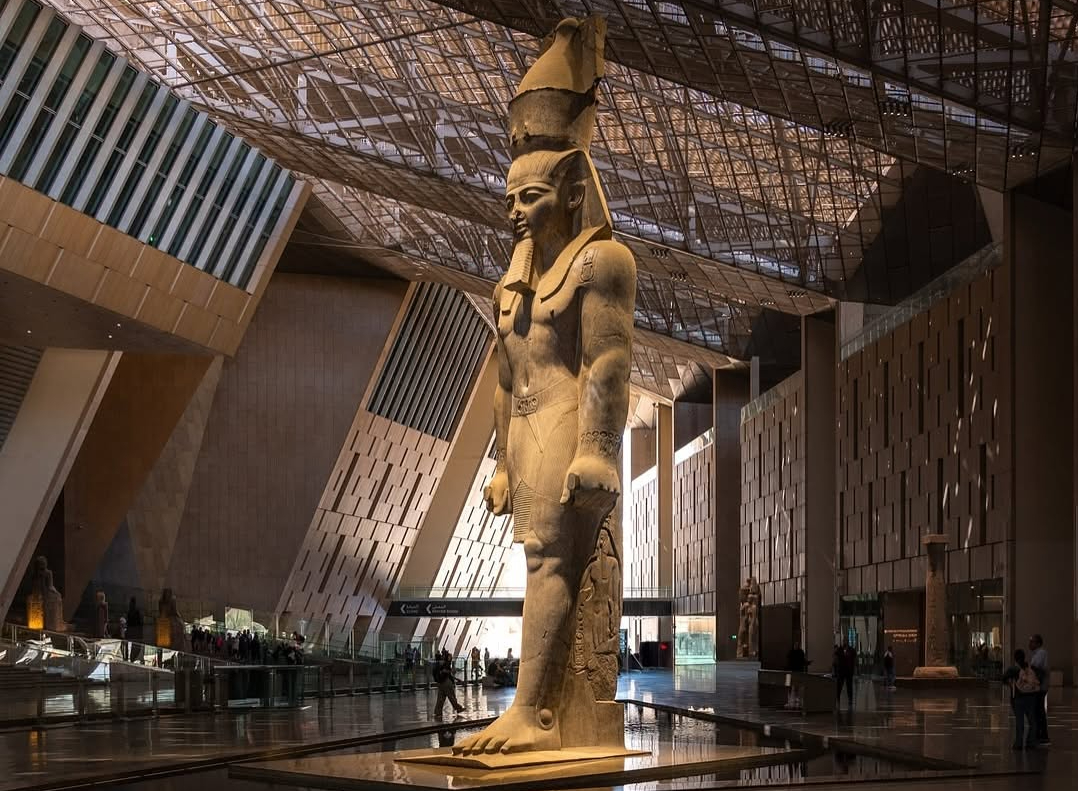Egypt’s $1 Billion Grand Egyptian Museum: A Monumental Cultural Investment Shadowed by a Recent Artefact Theft
Egypt is preparing to unveil one of the most ambitious cultural projects in its modern history: the Grand Egyptian Museum (GEM). More than two decades in the making, the museum has come to represent a national vision of heritage preservation, economic revival, and global cultural leadership.
Yet, as anticipation builds, a stark reminder of vulnerability has emerged. The recent theft and destruction of a 3,000-year-old golden bracelet from a Cairo museum has drawn international attention to the ongoing challenges of safeguarding Egypt’s ancient treasures.
A Cultural Megaproject More Than Twenty Years in the Making
The Grand Egyptian Museum has evolved from an idea born in the early 1990s to one of the world’s largest museum complexes dedicated to a single ancient civilization. Construction officially began in 2005, and despite delays due to political shifts, economic strains, and global events, the project persisted—testament to Egypt’s long-term cultural strategy.
Covering an expansive 470,000 square meters, the GEM sits at the edge of the Giza Plateau, intentionally positioned within direct view of the pyramids. Its design combines geometric modernism with symbolic references to ancient Egyptian architecture, all while integrating advanced climate and conservation technologies.
Inside, visitors will encounter thousands of artefacts spanning Egypt’s vast historical timeline. Many pieces have been transferred from the Egyptian Museum in Tahrir Square, easing decades of overcrowding. Twelve exhibition halls dedicated to themes such as kingship, daily life, belief systems, and afterlife rituals will allow more layered storytelling than previously possible.
This is not simply a museum but a new cultural ecosystem. Educational wings, restoration labs, auditoriums, commercial areas, and public squares have been built to support scholarship, tourism, and community engagement for generations to come.
The $1 Billion Investment and Its Economic Significance
The GEM’s estimated $1 billion price tag positions it among the most substantial cultural investments of the 21st century. A significant portion of its funding has come through Japanese development loans, reflecting its status as both an international cooperation project and a national priority.
For Egypt’s economy, the museum is expected to serve as a crucial engine for recovery and growth. Tourism represents a major pillar of the country’s GDP, and the GEM is forecast to attract 15,000 to 20,000 visitors daily once fully operational.
Government officials have framed the museum as a transformative asset—one that will not only increase foreign currency inflows but also redefine Egypt’s global cultural presence. In a competitive international tourism landscape, the GEM is intended to stand as a destination in its own right, comparable to the Louvre in Paris or the British Museum in London.
Architecture That Bridges Ancient Legacy and Modern Innovation
Designed by the acclaimed firm Heneghan Peng Architects, the Grand Egyptian Museum’s architecture reflects harmony between the ancient desert landscape and contemporary design. Triangular patterns, echoing the geometry of the pyramids, repeat throughout the façade. Natural light filters through vaulted spaces, casting shadows reminiscent of temple corridors.
Beyond its visual identity, the museum houses one of the most advanced conservation centers in the Middle East. These labs allow researchers, archaeologists, and conservators to examine artefacts using sophisticated imaging and preservation technologies.
Digital storytelling and mixed-reality installations further elevate the visitor experience, ensuring that each gallery immerses audiences in Egypt’s long and intricate narrative.
A Troubling Theft Underscores Persistent Vulnerabilities
Despite the country’s ambitious investment in world-class preservation, a recent theft from a Cairo museum has sparked significant concern. A 3,000-year-old gold bracelet, believed to have belonged to Pharaoh Amenemope of the 21st Dynasty, vanished from the restoration laboratory of the Egyptian Museum in Tahrir Square.
The investigation revealed that an employee exploited her access to remove the artefact. In an alarming chain of events, the bracelet was sold through several intermediaries—eventually ending up in a foundry, where it was melted down in an attempt to erase its traceable history. Authorities have since detained multiple suspects and recovered proceeds from the sale, though the artefact itself is lost forever.
More troubling for many observers is the revelation that the lab where the bracelet was stored lacked adequate security, including surveillance cameras. This incident exposes a disconnect between Egypt’s aspirations for global cultural leadership and the persistent infrastructure gaps within existing institutions.
A Contrast of Triumph and Fragility
The timing of the theft highlights a stark contrast. On one hand, Egypt is preparing to open one of the most technologically advanced museums ever built. On the other, some of the country’s invaluable artefacts remain vulnerable to internal mismanagement and insufficient protections.
This contradiction underscores an essential truth: expanding cultural infrastructure requires parallel investments in governance, training, and security. The GEM may symbolize a new era, but the responsibility of safeguarding heritage extends beyond its walls.
Why the GEM Matters and What Comes Next
The Grand Egyptian Museum represents far more than a monumental building project. It reflects Egypt’s intention to reclaim agency over its history, redefine its cultural identity, and reshape its global image.
For citizens, it is a site of national pride. For business leaders and policymakers, it is a calculated investment in economic resilience. For scholars and global audiences, it provides unprecedented access to one of the world’s most profound ancient civilizations.
However, the recent theft serves as a warning: heritage protection is not guaranteed by architecture alone. The success of the GEM will depend on continued vigilance, transparency, and modernization across all cultural institutions.
A New Era for Egyptian Heritage, Built on Old Lessons
As the doors of the Grand Egyptian Museum finally open, Egypt is stepping into a new chapter—one that promises international admiration and renewed domestic engagement with its ancient past.
But the bracelet incident reminds the world that cultural stewardship is not only about constructing grand spaces. It requires constant oversight, ethical responsibility, and unwavering commitment to protecting history in every corner, from the most iconic gallery to the smallest restoration room.
Egypt’s future in cultural preservation will be measured not only by the grandeur of the GEM, but by the care taken to ensure that every artefact, known or newly unearthed, is treated as irreplaceable.














